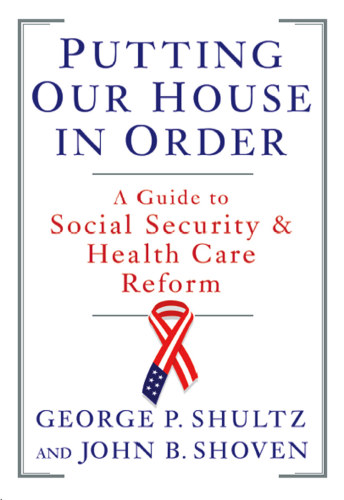
Putting Our House in Order
A Guide to Social Security and Health Care Reform
- اطلاعات
- نقد و بررسی
- دیدگاه کاربران
نقد و بررسی

February 25, 2008
Former secretary of state Shultz and Stanford economics professor Shoven offer an agenda to reform Social Security and health care in a useful but abstruse primer meant to clarify some of the most pressing issues in the upcoming election. Shultz and Shoven offer an overly optimistic assessment of the economy's health and warn of the “Iceberg Ahead”: the “staggering projected costs” of Social Security, Medicaid and Medicare. The authors boil the crisis down to the simple fact that, “in demographic terms, we are retiring earlier and living longer.” Government revenues alone cannot meet the needs of the increasing costs of health care, a longer life span and a growing cadre of those retiring at 62. Shultz and Shoven acknowledge that reforms in entitlement programs are notoriously difficult to implement, but “inaction is not an option,” and reforms should have been in place 10 years ago. To keep Social Security and health care from buckling under their prohibitive costs, the authors suggest a series of reforms, chief among them measures to encourage older Americans to continue participating in the labor force. The proposals in this “citizen's guide” are undeniably convincing, yet their presentation might prove too dense and difficult foranyone but the most dedicated political enthusiast.

April 1, 2008
As the federal governments social programs continue on course toward predicted fiscal whirlpools (Social Security will be in the red within10 years), the tacks to safe harbor are no secret: either restrain benefits or increase taxes. Favoring the former on the grounds that the latter will weaken the economy on which entitlement programs depend, former cabinet officer Shultz and economics professor Shoven propose reforms of Social Security, Medicare, and Medicaid.The authors describethe rules of programswhose finances are becoming demographically squeezed between a healthier, longer-living, ever-larger retirement cohort andthe relatively decreasing productive workforce that pays the taxes. Suggesting a combination of incentives to increase the workforce and, to restrain costs, attachment of benefits more closely to the individual via personal accounts and vouchers, Shultz and Shoven outline how changing various rules, such as the calculation of benefits, couldmove entitlement programs toward fiscal rationality without sacrificing their universality. Technocratic and not overtly political, this policy paper is timely for election year debates.(Reprinted with permission of Booklist, copyright 2008, American Library Association.)




دیدگاه کاربران